Yogurt Manufacturing Process and the Application of Milk Powder
The provided text discusses the yogurt manufacturing process and the application of milk powder in it. It explains the steps involved in making yogurt and the role of milk powder in enhancing its quality and consistency. Additionally, it highlights that some countries, unable to access fresh milk, use milk powder as a substitute in yogurt and as an essential ingredient.
Introduction_Yogurt
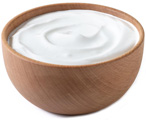 Yogurt (also spelled yogourt or yoghurt), as per its definition, is a product crafted from milk, either with or without the inclusion of certain natural derivatives of milk, such as skim milk powder, whey concentrates, caseinates, or cream. It possesses a gel-like structure that arises from the coagulation of milk proteins, brought about by the secretion of lactic acid from specific strains of bacterial cultures. Moreover, these bacterial cultures must be "viable and abundant" at the time of consumption. Yogurt, a beloved fermented dairy product, has witnessed remarkable growth in the market over the past few decades. Protein fortification is a vital aspect of the yogurt manufacturing process as it enhances the nutritional and functional properties while preventing undesirable textural defects like syneresis. Dairy powders play a key role in this fortification process, offering various options for enriching yogurt with protein.
Yogurt (also spelled yogourt or yoghurt), as per its definition, is a product crafted from milk, either with or without the inclusion of certain natural derivatives of milk, such as skim milk powder, whey concentrates, caseinates, or cream. It possesses a gel-like structure that arises from the coagulation of milk proteins, brought about by the secretion of lactic acid from specific strains of bacterial cultures. Moreover, these bacterial cultures must be "viable and abundant" at the time of consumption. Yogurt, a beloved fermented dairy product, has witnessed remarkable growth in the market over the past few decades. Protein fortification is a vital aspect of the yogurt manufacturing process as it enhances the nutritional and functional properties while preventing undesirable textural defects like syneresis. Dairy powders play a key role in this fortification process, offering various options for enriching yogurt with protein.
Furthermore, in certain countries where fresh milk is not readily available, milk powder serves as a valuable substitute in yogurt, playing a crucial role as an essential ingredient.
The most prevalent types of commercially available yogurt include set-type yogurt and strained yogurt. Recently, frozen yogurt and drinking yogurt have also gained popularity. Set-type yogurt undergoes fermentation in retail containers, with no further stirring or water removal after the process. On the other hand, strained (or stirred, or Greek-style) yogurt undergoes fermentation in tanks with continuous mild stirring, and after the completion of fermentation, a portion of the whey is removed. As a consequence of the distinct manufacturing processes, the two types exhibit contrasting textures; set-type yogurt acquires a continuous gel texture, while strained yogurt displays a viscous, creamy smooth texture.
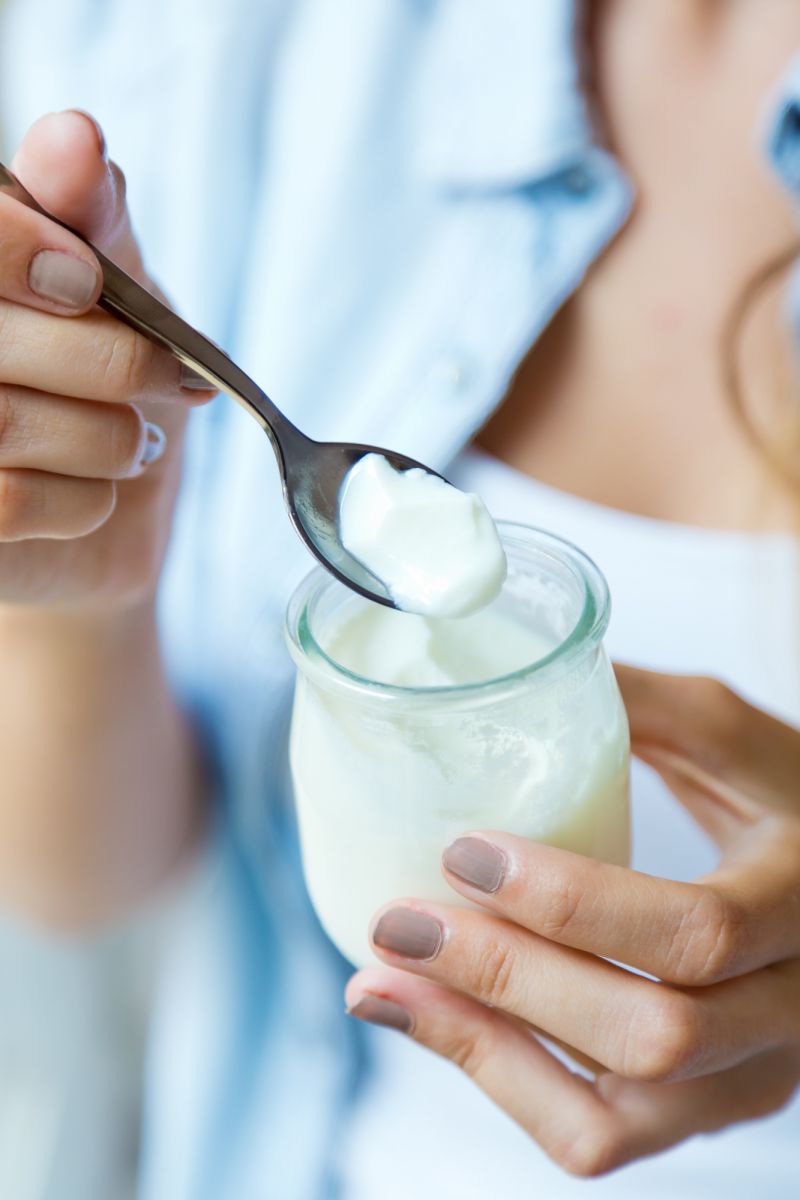
What are the key stages and processes involved in the yogurt production line in the factory?
The key stages and processes involved in the yogurt production line in the factory are as follows:
-
Preparation of Raw Materials
The first stage of the yogurt production line in the factory is the preparation of raw materials. The choice of raw materials will greatly affect the quality of the finished product. Yogurt is made with a variety of ingredients including milk, proteins, fats, sugars, stabilizers, emulsifiers, fruits, flavors, and bacterial cultures. The primary and essential component in yogurt production is whole milk or skim milk. Also, Some countries lacking access to fresh milk use milk powder as a substitute, making it an essential ingredient in yogurt production.
The quality level of milk in terms of microbial load should be highly ideal, as a high microbial load in the milk used for yogurt production can have an undesirable impact on yogurt quality. The milk should not contain any antibiotics or disinfectant compounds, as their presence can inhibit the growth of yogurt starter cultures, slowing down or halting the fermentation process in industrial yogurt production. Also, It is crucial to pay attention to the acidity of the delivered milk in yogurt factories. The acidity level should not exceed 16 to 17 degrees dornic.
-
Milk Component Standardization—Fat and Solid-Non-Fat (SNF) Content
The second phase of the yogurt production line in the factory is the standardization process. The process of milk standardization involves regulating the fat and solid-non-fat (SNF) content.
Bovine milk typically contains fat ranging from 3.2% to 4.2% by weight. Depending on the desired product, the fat content is adjusted to various levels: <0.5% for skim milk, 1.5% to 2% for semi-fat milk, and 3.5% for full-fat milk. For yogurt production, the fat content varies between 0.1% to 10% based on consumer preferences. To achieve the desired fat level, producers may add skim milk or milk fat or separate the fat from milk using a centrifuge and then combine milk fat with skimmed milk. The standardization process holds immense significance as the fat content directly impacts yogurt's characteristics. Increasing the fat content leads to a thicker consistency and viscosity of yogurt. Moreover, the milk fat content influences the maximum rate of pH decrease and pH lag phase during yogurt fermentation.
Standardization also applies to the SNF content of milk, comprising lactose, protein, and minerals. The SNF content in milk ranges from 11% to 14% of its total weight, while in yogurt, it varies between 9% to 16%. In some cases, producers alter the SNF content of milk used for yogurt manufacture to achieve specific coagulum characteristics. Higher SNF levels result in increased yogurt viscosity and firmness. Standard practices include fortifying the milk mixture with milk powder (skimmed or full fat), whey protein concentrates, or casein powder to achieve the desired SNF content and enhance firmness and cohesiveness. It is essential to note that both the fat and SNF content of milk have a significant impact on the fermentation process. The interaction between milk SNF content and fermentation temperature particularly affects the duration of the fermentation process, where higher SNF content extends the duration of fermentation.
In summary, increasing the level of milk solids enhances the coagulation strength of the yogurt and reduces the separation of whey from the curd. The milk solids used in the yogurt production line in the factory are standardized through one of the following methods:
- Evaporation of the milk and removal of 20-10% of its water content.
- Addition of non-fat dry milk in the range of 0.5% to 2.5%.
- Incorporation of milk concentrate.
- Addition of the ultrafiltration retentate from skimmed milk.
- Addition of whey powder.
- Addition of sodium Caseinate powder.
According to international standards, the minimum non-fat milk solids required for industrial yogurt production should be 8.2%. In addition to the fundamental milk ingredients, flavored yogurts employ thickening and stabilizing agents. These Thickening and stabilizing agents increase the water-absorbing capacity, thus preventing whey separation in the yogurt. According to Iran's national standard, the use of these agents is permissible up to a maximum of 1%. When using additives, their compliance with the standards and the appropriate quantity must be considered, as excessive usage not only poses potential health risks but also imparts an undesirable taste to the final product.

-
Homogenization
In this stage of the yogurt production line in the factory, homogenization is essential to prevent fat separation during production and transportation and to achieve yogurt with high consistency and stability. Homogenization reduces the size of fat globules, increasing their number. This leads to better light scattering, resulting in a whiter appearance of the yogurt. In commercial yogurt making, homogenization has the benefit of giving a uniform product, which will not separate. Homogenization is accomplished using a homogenizer or viscolizer. In this machine, the milk is forced through small openings at high pressure, and fat globules are broken up due to shearing forces.
In the industrial yogurt production line, performing pasteurization after homogenization reduces the likelihood of lipolysis. The preheated milk, brought to a temperature of 55-60 degrees Celsius, is sent to the homogenizer and homogenized at a pressure of 15-20 megapascals. Subsequently, it returns to the pasteurizer to complete the heat treatment process.
-
Milk Pasteurization
Pasteurization is the most critical stage in the production of fermented dairy products, especially industrial yogurt. Apart from ensuring the elimination of potential pathogenic microorganisms and sanitizing the milk, the heat treatment process for yogurt production serves other essential purposes, as follows:
Inactivation of milk enzymes.
Reduction of non-pathogenic microorganisms that might compete with the starter cultures.
Inactivation of bacteriophages.
The inactivation of natural antimicrobial compounds present in milk could hinder starter cultures' activity.
Denaturation of serum proteins to improve the final product's texture.
Different heat treatments can be applied, and categorized based on their duration and temperature (see table below).
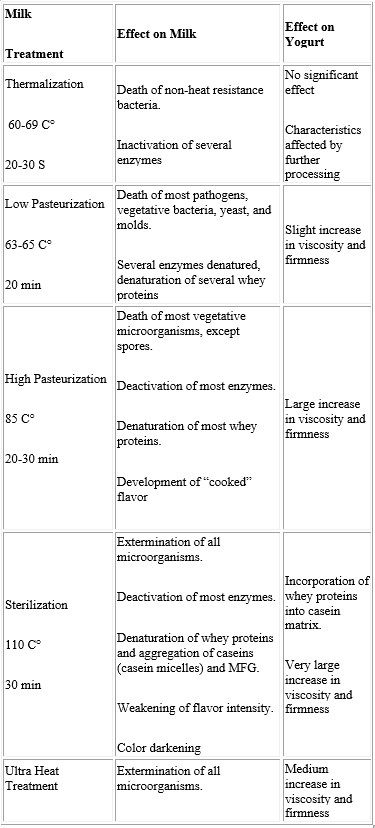
The most commonly used heat treatments include thermalization, low and high pasteurization, sterilization, and UHT (Ultra Heat Treatment). For yogurt manufacturing, high-temperature pasteurization at 85°C to 80°C for 20 to 30 minutes is frequently employed. This process ensures the yogurt's safety and prepares it for subsequent processing stages. Subsequently, the milk is cooled down to a temperature of around 45°C, the ideal temperature for yogurt fermentation.
Therefore, pasteurization used in the yogurt production line at the factory is carried out at much higher temperatures and durations compared to pasteurization used for milk meant for direct consumption. This process can be done in a batch system using double-walled tanks or continuously using plate pasteurizers.
Note: In non-continuous systems where milk is reheated in open containers, the higher temperature and longer duration of pasteurization lead to partial water evaporation, resulting in increased milk solids and, consequently, an improvement in the texture of the produced yogurt.
-
Fermentation Process
The fermentation process stands as the pivotal stage in yogurt manufacturing. This crucial step leads to the formation of the yogurt curd, shaping its unique texture and distinct flavor. At the core of the fermentation process lies the starter culture, orchestrating biochemical reactions that induce curd formation and flavor development.
For industrial yogurt production, yogurt fermentation necessitates the use of yogurt starter cultures containing specific bacteria. The yogurt starter culture comprises two bacteria, Streptococcus thermophilus, and Lactobacillus bulgaricus, in a one-to-one ratio. Streptococcus thermophilus produces lactic acid, while Lactobacillus bulgaricus is primarily responsible for generating aromatic compounds.
-
Packaging & storage
In this stage of the yogurt production line at the factory, packaging, and warehouse storage take place. The materials used for yogurt packaging must comply with the standards. Besides being impermeable to external substances, the packaging material should also be resistant to the high acidity of yogurt. The containers used for yogurt packaging should be disposable.
For yogurt packaging, polymer containers of various types are commonly used. These containers are primarily made of polyethylene, polypropylene, or polystyrene. To seal these containers, aluminum foil coated with a layer of plastic is typically used.
Packed yogurt, in whatever form, should be stored and transported at less than 10˚C, but preferably below 5˚C. This slows down the biological and biochemical reactions and hinders the growth of potential contaminants, such as yeasts and mold.
-
Yogurt Incubation
In this stage of the yogurt production process at the factory, the yogurt containers are placed in the incubation room for approximately 3 hours at a temperature of 45-42 degrees Celsius.
The incubation temperature must be carefully controlled, as it directly affects the rate of microbial growth and, consequently, the ratio of starter cultures.
In industrial yogurt production, a lower incubation temperature accelerates the growth of Streptococcus thermophilus, resulting in a sweeter yogurt, while a higher temperature stimulates the growth of Lactobacillus bulgaricus, leading to a tangier yogurt.
Once the yogurt's acidity reaches about 70 degrees Dornic or a pH of 4.4-4.3, the incubation room's doors are opened, and cool air at approximately 4 degrees Celsius is introduced while expelling the warm air. Then, the doors are closed, and the temperature is reduced, transforming the incubation room into a cooler environment.
The temperature of the yogurt reaches around 10 degrees Celsius within a short period. The yogurt remains at this temperature for about 2 hours until it reaches the desired viscosity. To ensure proper air circulation in the incubation room, fans are installed to facilitate the movement of air.
.jpg)
-
Yogurt Cold Storage
The final stage of the yogurt production process at the factory is cold storage. After preliminary cooling, the yogurt is transferred to cold storage, where the temperature reaches approximately 8-6 degrees Celsius. Before being released to the market, the yogurt must remain at this temperature for at least 48 hours to achieve the desired consistency.
Transportation of the yogurt should be carried out using refrigerated and suitable vehicles at a temperature of around 5-4 degrees Celsius. The shelf life of the yogurt at this temperature is about 14 days. Before leaving the factory, the yogurt must undergo evaluation based on its visual, sensory, chemical, and microbiological characteristics.
What are the factors that can alter the quality of yogurt?
Bacteriophages: Viruses that attack yogurt starter organisms, leading to long or never-ending incubations, especially when poor hygiene and lack of housekeeping increase the risk.
Starter Culture: The selection of appropriate organisms for fermentation is crucial to achieving the desired flavor, aroma, and texture in yogurt. Techniques like Direct Vat Inoculation (DVI) are becoming more common to minimize the risk of "phage" attacks on bulk starter cultures.
Fat %: The percentage of fat in yogurt affects its "mouthfeel," with higher fat levels resulting in a creamier and smoother texture. Some low-fat yogurt products aim to replicate the creamy mouthfeel without using additional fat.
Dry Matter Content: Higher dry matter (solids non-milk-fat) leads to firmer yogurt. Commercial manufacturers control the dry matter content for consistent production.
Sugars and Sweeteners: Disaccharide or monosaccharide sugars are used to achieve the desired sweetness level in yogurt. High sugar levels should not be added before incubation to avoid adversely affecting the starter culture.
Stabilizers: Hydrophilic colloids are added to increase yogurt viscosity and prevent whey separation (syneresis). The right amount of stabilizer varies and can affect the yogurt's texture, while traditional natural yogurt may not require stabilizers for a firm gel. Mechanical handling of yogurt after incubation also impacts its final texture and viscosity, necessitating equipment design considerations.
What are some of the most significant issues that can occur during yogurt preparation?
A) Whey separation in yogurt.
B) Yogurt being too diluted.
C) Slow acid production and lack of necessary flavor and aroma.
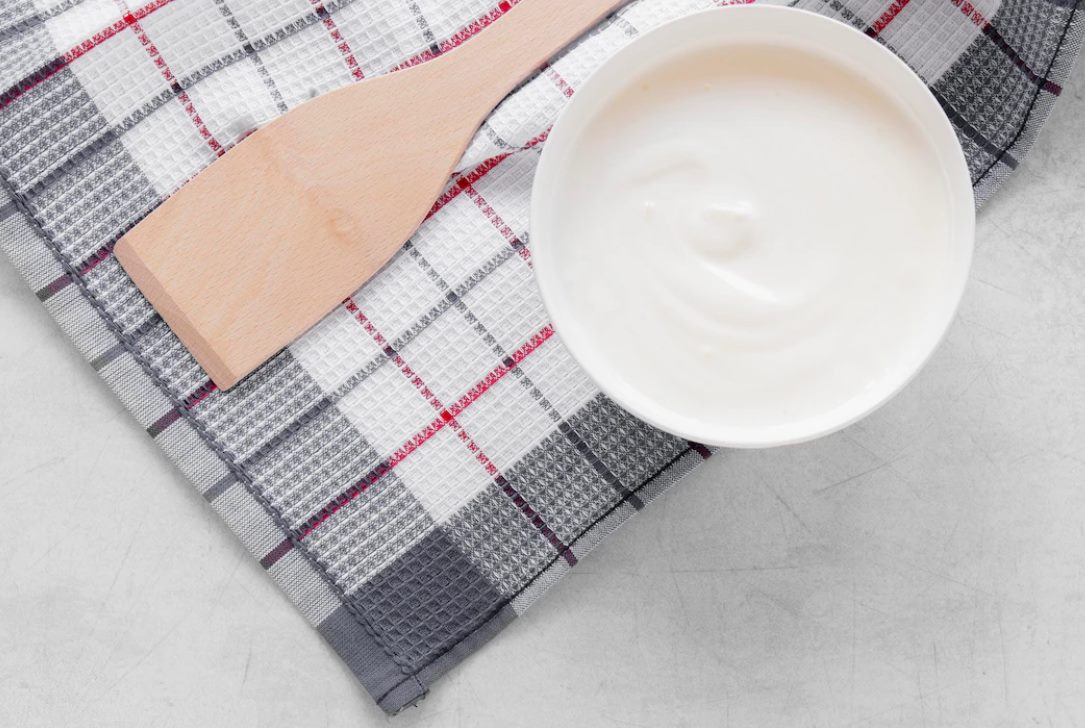
What are some of the reasons behind syneresis occurrence in yogurt?
-
Insufficient pasteurization heat may lead to a decrease in the protein-water bonding capacity.
-
The low solid content in milk can result in weakened curd strength.
-
Excessive acid production due to prolonged fermentation time.
-
Agitation or movement of yogurt between the end of fermentation and cooling.
-
Disruption of the salt balance in milk; for instance, adding calcium chloride in certain seasons when milk has lower calcium levels (0.2% to 0.4%). Slow acid production and lack of flavor and aroma may be due to inaccuracies in replicating yogurt starter cultures. An imbalance between the two yogurt starter bacteria may occur, and if the milk contains antibiotics or bacteriophages, this problem may arise. Diluted yogurt could be a result of low solid content in milk, which can be resolved by adding non-fat dry milk.
Read More: Approaches to Control Yoghurt Syneresis
What are the reasons for Bloated yogurt Packaging?
Yogurt container bloating can have several causes, three of which are of microbial origin, and one is non-microbial. Firstly, severe contamination with coliforms can be detected by culturing yogurt in MCA or VRBA media. Secondly, contamination with yeasts may be a probable cause, evident through culturing in YGCA or DRBC media, along with a yeasty flavor and alcohol-like characteristics in yogurt. Thirdly, contamination with heterofermentative LAB can occur due to the incorrect use of starters or phage contamination, requiring specific identification tests like the heterofermentative LAB identification test. Another method to detect this type of contamination is by using bloated yogurt as a culture to inoculate pasteurized or sterilized milk and examine its gas production. The fourth reason, which is rare, is the existence of pressure differences between the packaging and consumption areas, leading to bloating in the product.
How does the type of milk affect homemade yogurt?
Cow milk is the most popular choice for culturing. Heating encourages the proteins to coagulate, resulting in a thicker yogurt than unheated or raw milk.
Goat milk is becoming more popular for culturing. The structure of goat milk is different from cow milk and results in a thinner finished yogurt than cow milk.
Sheep milk is sweeter than cow milk and contains more protein, resulting in a thicker, creamier yogurt. It is used more for making cheese than for making yogurt.
Is there any difference in nutritional value and quality between the industrial yogurt available in stores and the yogurt made at home from pasteurized milk?
Yes, there is a difference. To achieve the desired texture, homemade yogurt requires boiling the milk and reducing its water content by at least 15%. Prolonged boiling significantly reduces its nutritional value. In the industry, instead of boiling the milk, a certain amount of milk powder is added, increasing the milk's concentration. As a result, industrial yogurt has a much higher nutritional value compared to yogurt made at home.
What is the impact of dairy powder incorporation on yogurt composition?
The incorporation of different dairy powders in yogurt significantly affects its overall composition, particularly its protein content. Each type of dairy powder contributes distinct proteins with varying functionalities, leading to differences in yogurt texture and consistency. Proper consideration of the dairy powder type and its incorporation rate is essential to ensure consistent physical attributes and prevent potential textural defects in the final yogurt product.
The type and amount of dairy powder used in yogurt fortification influence the protein composition of the final product. Higher protein content often results in increased viscosity and gel strength, contributing to a thicker and creamier texture. The choice of dairy powder can also impact the gel organization and microstructure of the yogurt, affecting sensory attributes such as mouthfeel and flavor.
What are the sensorial attributes of fortified yogurt?
Fortified yogurts exhibit unique sensory attributes, depending on the type of dairy powder used for fortification. The sensory profile includes aspects like flavor, aroma, texture, and appearance. Consumers may perceive variations in taste, mouthfeel, and overall sensory experience when consuming yogurt fortified with different dairy powders. Understanding these sensory attributes allows manufacturers to tailor yogurt formulations to meet consumer preferences and deliver a delightful yogurt experience.
Does dried milk powder successfully thicken yogurt?
Yes, One of the ways you can get better firmness in yogurt is to add powdered milk. This increases the volume of milk solids, so the resulting yogurt is thicker.
Which milk powder is best for yogurt?
Although there are several types of milk powders for this purpose, one of the most highly recommended is nonfat dry milk powder. Instant Skimmed milk powder is ideal for the production of yogurt. It has low fat and a higher concentration of protein, which helps create the perfect thicker, and creamier consistency. Also, SMP has minimal involvement in oxidized flavor. Another reason to use this type of milk powder is that it contains specific strains of bacteria. That is necessary for making yogurt and can help to ensure a consistent and high-quality end product. In terms of protein level, the protein content of the milk used for making yogurt should be around 18 - 24 %. This is because the protein in milk plays a key role in the formation and texture of the yogurt. But, The ideal milk powder for this purpose is one with a higher protein level. By adding an extra amount of protein from the powdered milk, the acid produced by the starter cultures forms stronger protein bonds in the milk, creating a firmer matrix. This results in a textured yogurt that can maintain its shape during transport and serving. We offer the best milk powder for making yogurt (yaourt). At Chaltafarm, we provide agglomerated skim milk powder (Medium Heat) with higher protein concentrations, which can be effectively used in the manufacturing of yogurt.
What is the impact of skim milk powder fortification on yogurt's textural and sensorial properties?
The fortification of yogurt with dairy powders, such as skim milk powder (SMP) which is widely used, significantly influences its textural and sensorial properties.
The choice of dairy powder and its incorporation rate can significantly impact yogurt's overall quality and acceptability. Proper consideration of the dry matter fortification method is essential to ensure consistent physical attributes and prevent potential textural defects.
Protein fortification plays a vital role in the yogurt manufacturing process, enhancing nutritional and functional aspects while preventing undesirable textural defects like syneresis. Skim milk powder (SMP) is commonly used for fortification due to its minimal involvement in oxidized flavor, and recommended addition rates of SMP in the yogurt mix range from 1% to 6%. A concentration of 3-4% SMP is generally appropriate for improving yogurt's textural quality, as higher amounts may lead to a powdery taste. SMP fortification increases yogurt viscosity and gel strength without a significant impact on the pH profile during fermentation, making it the standard process for yogurt preparation in the industry.
Yogurts fortified with SMP exhibit a smooth and creamy texture with low graininess and lumpiness. SMP-fortified yogurts have a unique fermented, cereal-type flavor and astringency. The enriched products are also characterized by their rich mineral composition and tyrosine content.
How much skim milk powder (SMP) should be added to improve the yogurt texture?
The recommended addition rate of SMP in the yogurt mix ranges from 1% to 6%, with 3-4% being generally appropriate for enhancing yogurt's textural quality.
Can milk made from powdered milk be used to make yogurt?
In yogurt production, milk powder plays a vital role as a substitute for fresh milk. The main function of milk powder is to provide the necessary solids and nutrients required for yogurt fermentation. The proteins, fats, and carbohydrates in milk powder serve as the building blocks for the yogurt culture to thrive and multiply.
Many customers have had success using high-quality powdered milk, such as Chaltafarm, for culturing yogurt. Maybe some powdered milk brands are highly processed and may not perform well in this situation.

What are some circumstances in many countries that make using powdered milk for yogurt production a viable option when considering the choice between fresh milk and powdered milk?
When faced with the choice of using fresh milk or powdered milk to make yogurt, the decision may seem clear. However, there are circumstances in many countries where using powdered milk for yogurt production becomes a good option due to:
Limited access to a reliable source of fresh milk.
Limited access to refrigeration facilities.
Lack of space in the factory for storing fresh milk.
What are the alternatives to skim milk powder for yogurt fortification?
Dairy technology has introduced alternative options, including milk protein isolates (MPI), milk protein concentrates (MPC), whey protein isolates (WPI), whey protein concentrates (WPC), micellar casein (MC), and caseinates.
Can yogurt fortified with different dairy powders have different flavors?
Yes, yogurt fortified with different dairy powders may exhibit unique flavors due to variations in the protein composition and microstructure of the final product.
How do different dairy powders impact yogurt's protein composition?
Each dairy powder contributes distinct proteins with varying functionalities, influencing yogurt's protein content and overall texture.
Why is it important to maintain a low microbial load in milk or milk powder for high-quality yogurt production?
Maintaining a low Total Plate Count (TPC) in the milk or used milk powder is essential for yogurt production. Any presence of disinfectants, antibiotics, or high microbial load can negatively impact the quality of the final yogurt product. Therefore, ensuring high-quality milk with low microbial counts is vital for producing desirable and consistent yogurt products.
Can whole milk powder be used for yogurt fortification instead of skim milk powder (SMP)?
While whole milk powder can be used, SMP is preferred due to its lesser involvement in developing an oxidized flavor and its widespread use in the yogurt industry.
Why is ultra-pasteurized/UHT milk not suitable for culturing yogurt?
Milk that is “too clean,” such as ultra-pasteurized (UHT) milk, or milk that has been heated by microwave, may be too sterile for the yogurt culture to use as nourishment.
Why might lactose-free and lactose-reduced milk not be suitable for culturing?
Lactose-free milk may not be ideal for culture due to various reasons. Some brands still contain lactose but include lactase, an enzyme aiding lactose digestion for lactose-intolerant individuals. However, these brands are usually ultra-pasteurized, which is unfavorable for culturing. Other lactose-free milk brands are filtered to remove lactose, resulting in insufficient food for the bacteria needed for culturing. Similarly, lactose-reduced milk may also not be suitable for culturing since it lacks sufficient nutrients for the bacteria, and it may undergo extensive processing.
Can non-dairy milk powder be used for yogurt production?
Yes, you can use non-dairy milk powder for yogurt production. Non-dairy alternatives like soy milk powder or almond milk powder can be used for individuals with lactose intolerance or dietary preferences.
Can flavored milk powder be used for yogurt production?
Yes, you can use flavored milk powder for yogurt production to create unique and flavored yogurt variants. Experiment with different flavors to find your favorite combination.
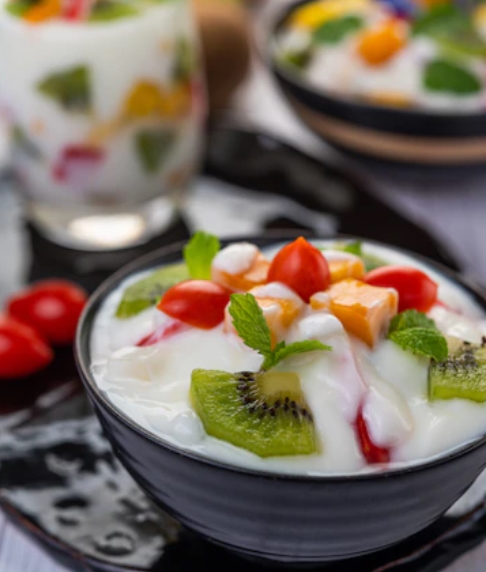
Conclusion
The first step in yogurt production is milk pasteurization, which involves heating the milk to kill harmful bacteria. After pasteurization, the milk is cooled down to a specific temperature required for the fermentation process. Yogurt culture or starter culture, containing live bacteria, is added to the milk to initiate fermentation. The fermentation process takes place at a controlled temperature to allow the bacteria to convert lactose into lactic acid, which thickens the milk and gives yogurt its tangy flavor. Once the desired level of fermentation is achieved, the yogurt is cooled to halt the process and obtain the desired consistency.
Finally, the yogurt is packaged and refrigerated for distribution.
Additionally, Milk powder is a common ingredient used in yogurt production to enhance the texture and quality of the final product. It serves as a source of milk solids, which contribute to the thickness and creaminess of the yogurt. Milk powder also improves the nutritional content of yogurt by increasing protein and calcium levels. Additionally, it acts as a stabilizer, preventing the separation of whey from the yogurt, thus improving its shelf life and consistency. Also, the amount of milk powder used can be adjusted to achieve the desired thickness and texture of the yogurt. Also, Some countries lacking access to fresh milk use milk powder as a substitute, making it an essential ingredient in yogurt production.
Read More: Navigating Global Dairy and Milk Powder Export Markets
Read More: What is SNF in Milk? A Guide to Measuring Solids-Not-Fat
To contact the Chaltafarm Dairy Export Department, please refer to the Contact Us section.
| Karam_revue.pdf |
| https://starfoodind.com |
| https://culturesforhealth.com |
| https://idahomilkproducts.com/wp-content/uploads/2017/02/Idaho-Milk-Products-Whitepaper-Milk-Protein-in-Yogurt-Manufacturing.pdf |
| https://scialert.net/fulltext/?doi=ijds.2011.172.180 |
| https://dairyconsultant.co.uk/yoghurt-yogurt-production.php |
| Conventional and Innovative Processing of Milk for Yogurt Manufacture; Development of Texture and Flavor: A Review - PMC (nih.gov) |


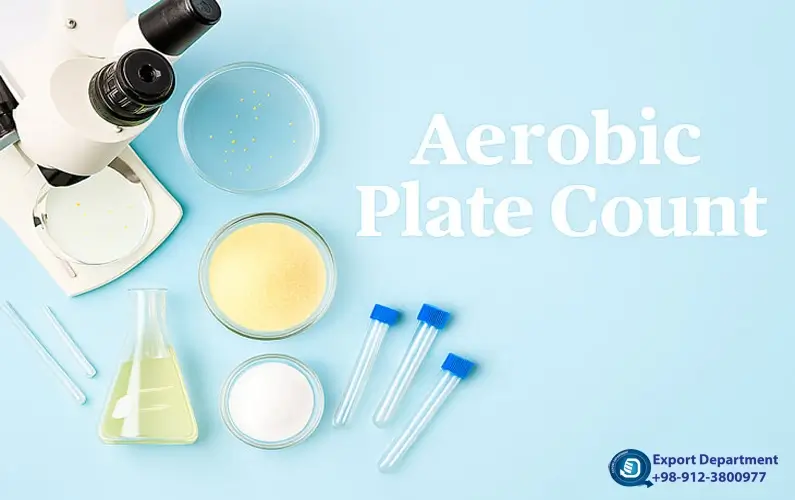
.webp)
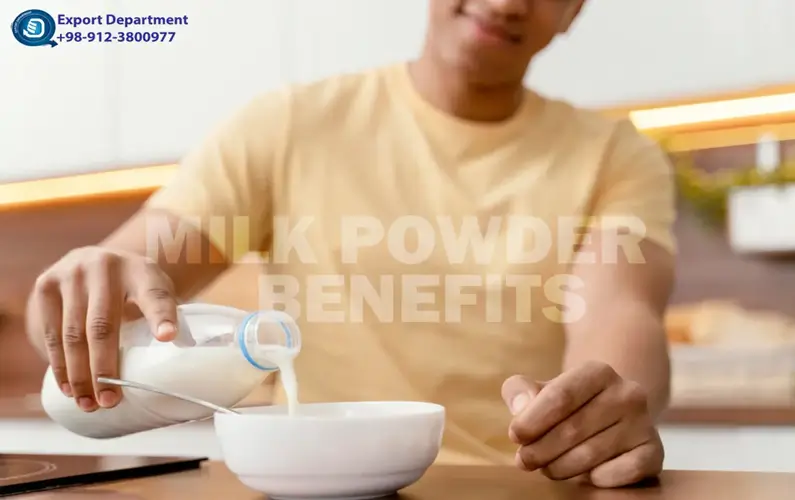
.webp)

.webp)